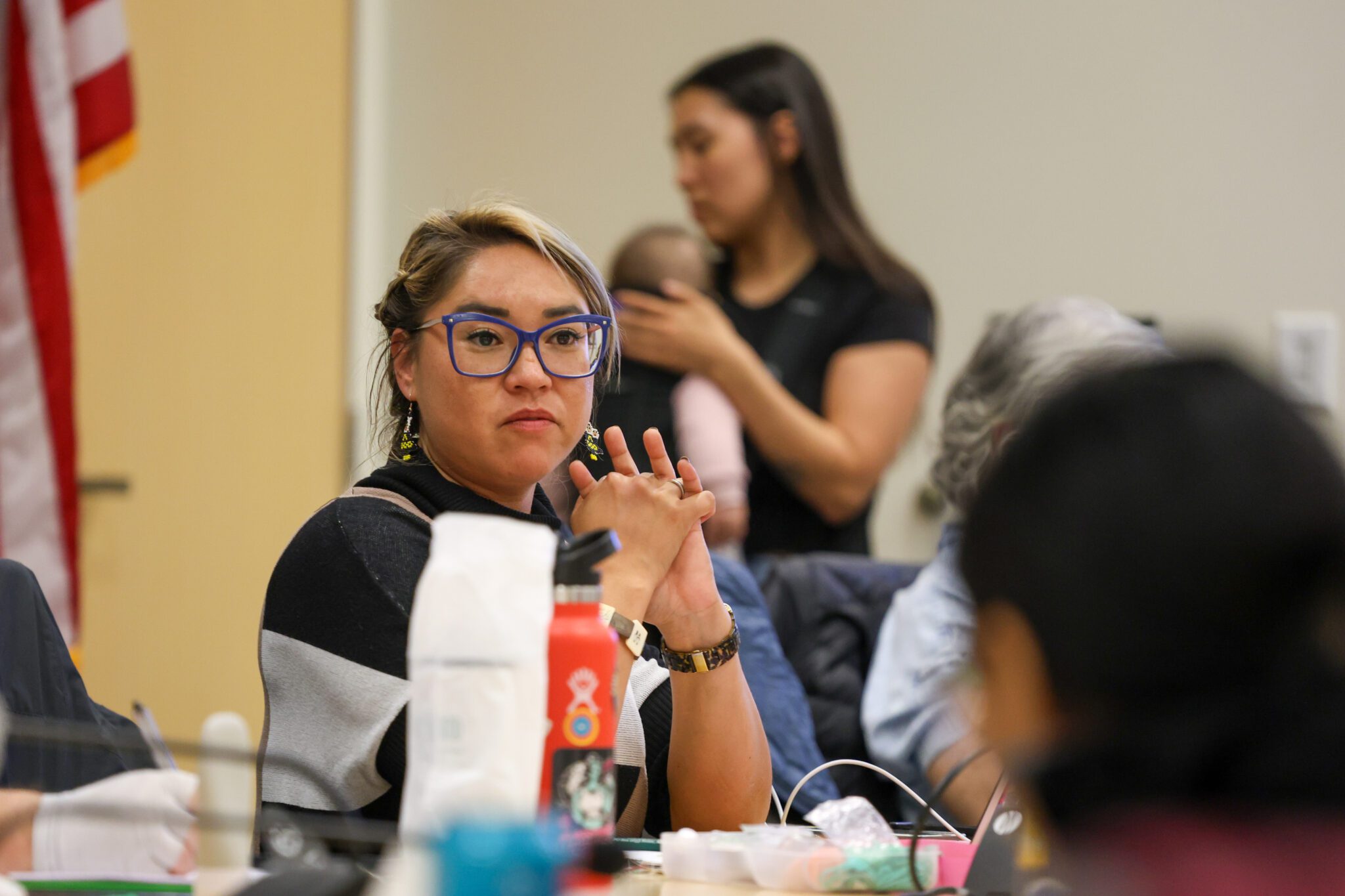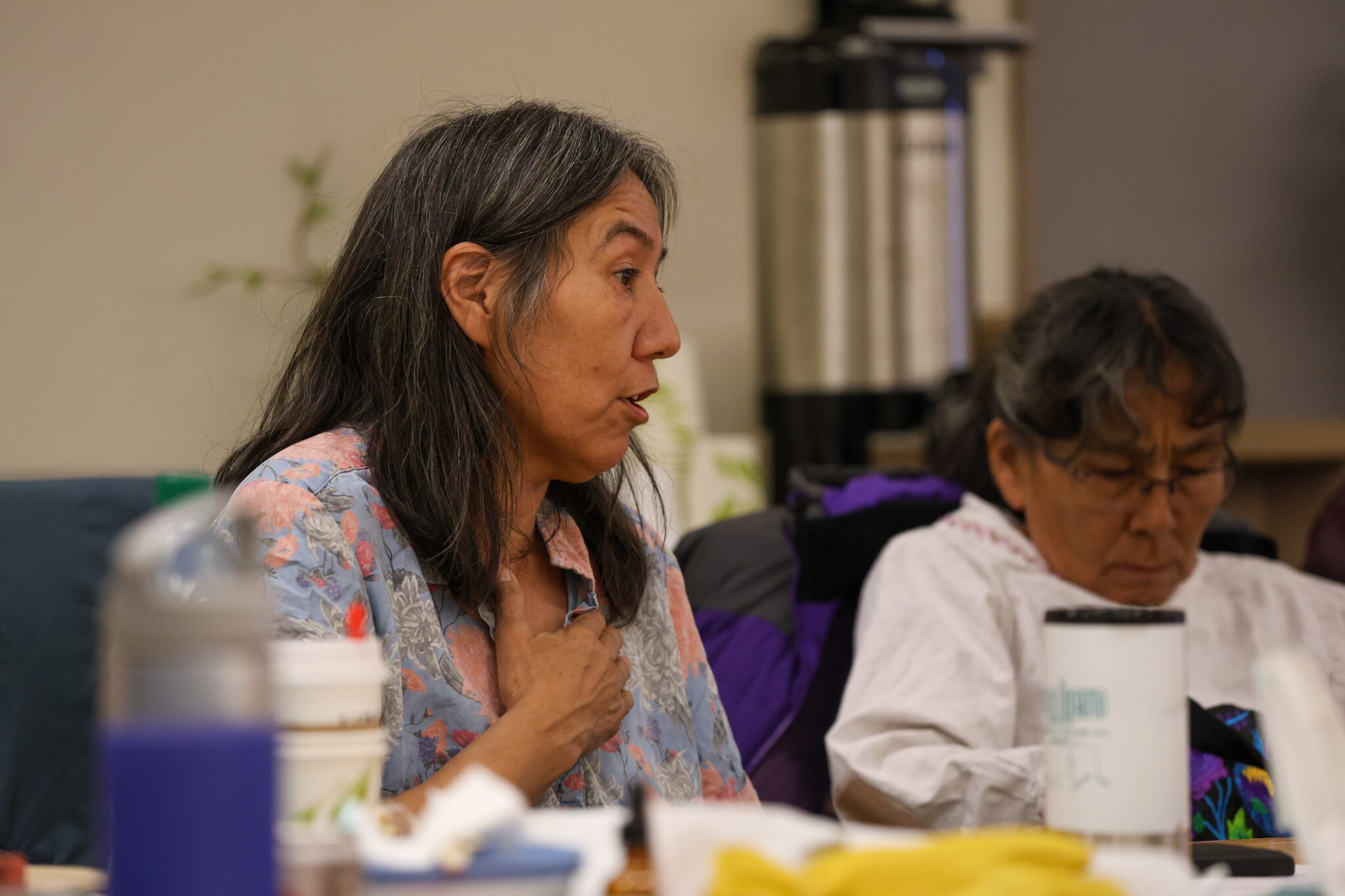The question “What are some actions people can take to build Indigenous power?” glowed on a large TV screen as 23 Native Alaskan women gathered around a long wooden conference table on the third floor of Norton Sound Regional Hospital.
The group was convened for the fourth Indigenous Women and Girls Gathering, an event organized by Alaska Community Action on Toxics (ACAT). The non-profit advocacy group strives to empower communities to eliminate exposures to toxics.
The faces in the room spanned four generations with elders, mothers young and old, and newborns sprinkled throughout. Mothers sporadically paced the room to quiet their babies, intent on not missing a moment.
The first of three days began with a panel on mining, with a focus on its impacts to reproductive health. Emily Murray recounted her efforts in 2007 and once again in 2024 to fight uranium mining north of Elim. Village of Solomon’s Deilah Johnson then updated the group on IPOP, LLC’s plans to dredge the Bonanza Channel to the east of Nome.
The operation would displace 4.5 million cubic yards of material over the course of five years in waters near lands occupied by the Village of Solomon for generations. Johnson said that while the tribe opted to move to nearby Nome, the lands still occupy a special place in their culture.

“All we want to do is protect our cultural identity. When we're out in Solomon is when we feel like a tribe, because we don't live in our lands. In the summer, we spend our time out in Solomon, and we feel whole, we feel connected, we feel like a family,” Johnson said.
After lunch, Nome’s Adelaine Ahmasuk spoke of “green colonialism”, a term used to describe colonial-style oppression being applied in the name of preserving the environment. She cited Graphite One’s planned mine along the Kigluaik Mountains as an example. Graphite mined from the site may be used in batteries for electric vehicles and other advanced electronics.
Ahmasuk, a mother of two herself, said that the group needed to prepare for this new wave of development.
“As the resources run low, they move to the next resource. So now we're at this new wave of rushing with hard rock mining, and from all of the lower 48 we know what the impacts are to uranium mining, to lithium mining,” Ahmasuk said.
As an advocate for the health and wellness of others, Ahmasuk said she has strived to develop a positive mindset that allows her to continue doing the work.
“So with this understanding, I really wanted to come to this work from a different perspective of not fighting, but how can you come to a piece of connection with these extractive forces, and then us being people that have stewarded these lands since time immemorial?” Ahmasuk said.
Indigenous Ingenuity
On the second day, the group discussed reproductive health at length. ACAT Director of Environmental Health and Justice, Vi Waghiyi, spoke of the clever adaptations Indigenous women created to survive in the Arctic.
“Our midwives made their own incubator for preemies. In the sod homes they would hang a cord down from the ceiling and anchor it with another cord using a bird pelt,” Waghiyi said. “And they would put the baby in that bird pelt, and then they would talk to it and give it broth. Ingenious, right? And these preemies survived.”
The group then discussed the various plants and animals used by Alaska Natives. Waghiyi’s eyes lit up as she expanded on the ingenuity of her people.
“The Creator gave us everything, and we thrived pre-western contact. There used to be 20,000 of us, 32 villages, and we're still here. Some people think we live in some of the harshest locations on the planet, but we thrive,” Waghiyi said.
On the third day, the group began transitioning their conversation into plans of action. They called out risks to health like chemical fragrances added to laundry detergent and shared resources to educate themselves.

Waghiyi warned that these risks are being ignored by state and federal agencies like the Environmental Protection Agency, particularly for Indigenous people.
“It's so important we make these informed decisions, because it's a burden we didn't create. That's why we're in this fight,” Waghiyi said.
She said part of ACAT’s fight is to help educate others on the risks of chemicals and toxic exposures so they can make more informed decisions. Events like IWGG are just one of several they host throughout the year, on top of advocacy work and research.
The non-profit is finalizing a declaration to formally document their concerns. They plan on widely distributing it once it's complete.







